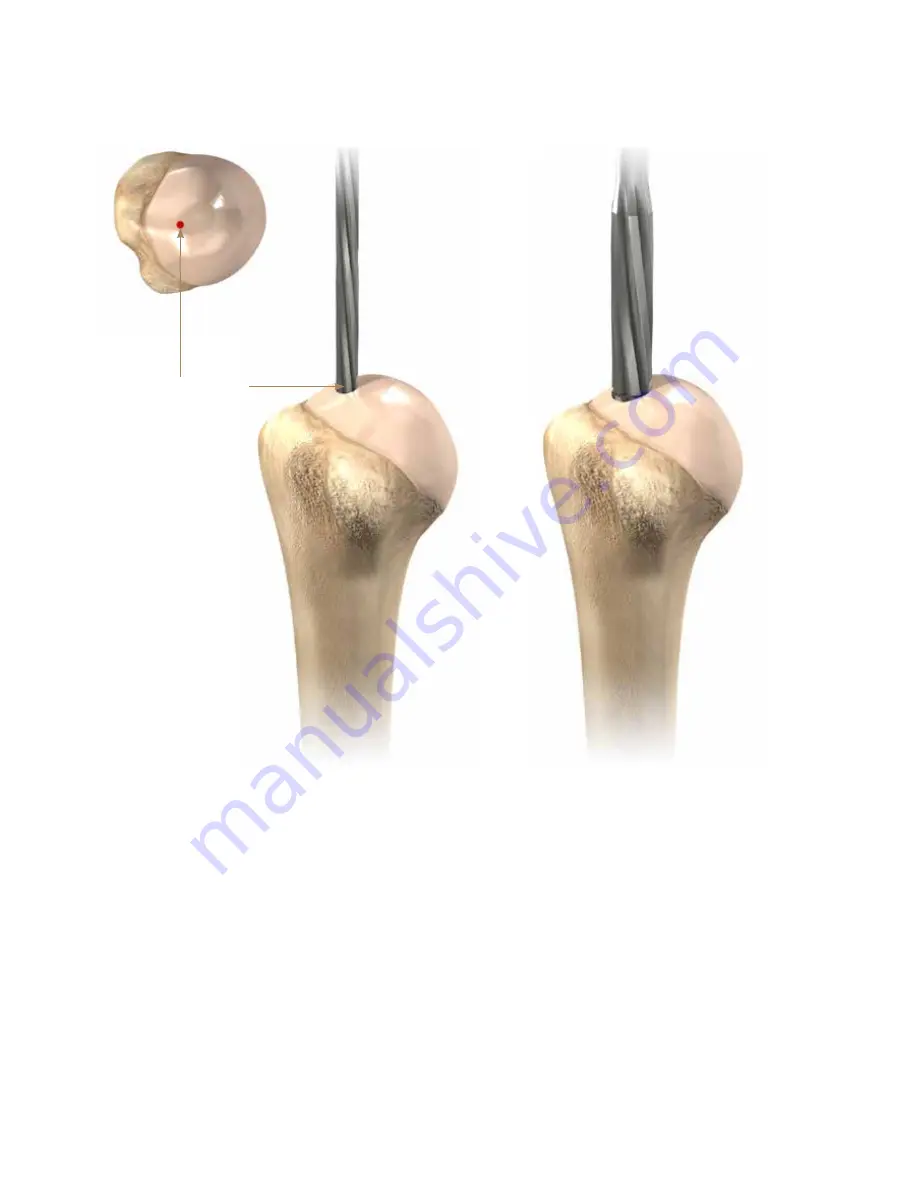
proximal Entry point
13
12
iNTRAmEDuLLARy cANAL pREpARATioN
using the 6 mm medullary canal reamer, make a pilot hole
in the humeral head, so that the reamer passes directly
down the axis of the intramedullary canal (Figure 12).
hand ream the medullary canal using the T-handle on
the reamer. Do not use a power reamer since this could
damage the humerus.
When using the standard length prosthesis, pass the
reamer down the intramedullary canal until the mid-level
circular mark on the reamer is level with the pilot hole.
When using the long stem prosthesis, pass the entire
length of the cutting flutes down the intramedullary
canal.
Sequentially ream, increasing the diameter until there is
contact with cortical bone of the intramedullary canal of
the humerus (Figure 13).
The final reamer size chosen will determine the size of the
cutting guide handle, the epiphyseal reaming guide, the
broach, trial stem and final implant. For example, if the
12 mm reamer begins to gain purchase in the
intramedullary cortical bone, use a 12 mm humeral
trial stem and final component, both for cemented and
cementless humeral implant versions.
Figure 12
Figure 13














































